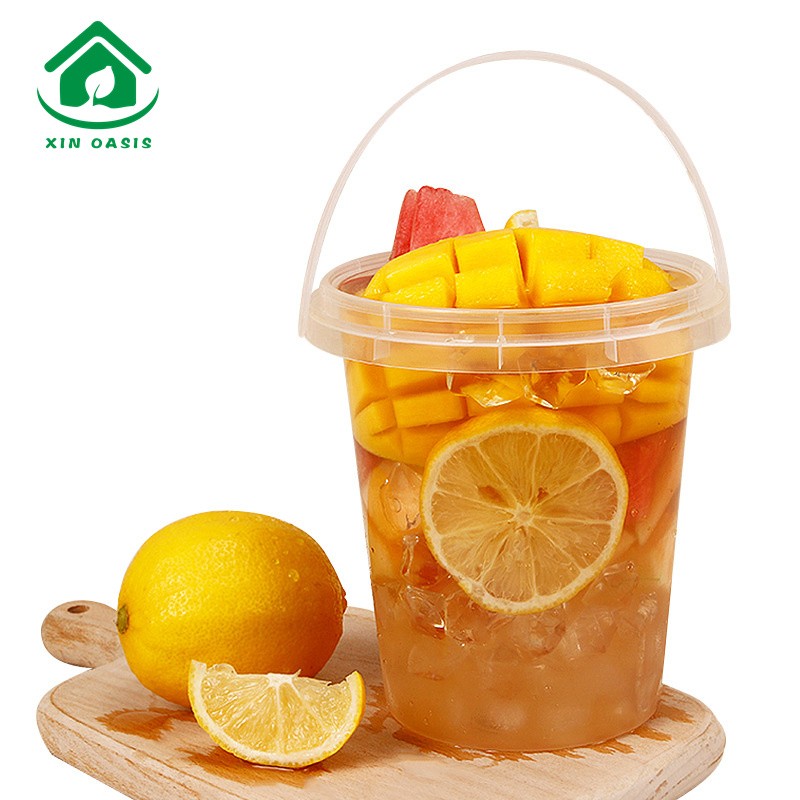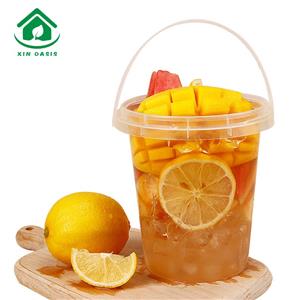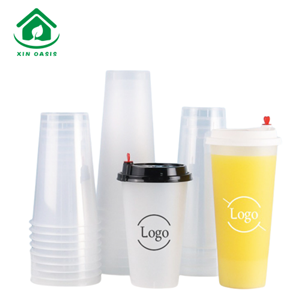How to choose PP plastic cup
How to choose PP plastic cup
-- Wuhan Xin Oasis
As a popular drink, the choice of packaging materials for milk tea is crucial to the brand and user experience, and some brands may enhance their brand image and consumer experience through special cup design or material selection.
However, there are many types of plastic cups, which have become a common choice for milk tea packaging due to their lightness, durability and cost effectiveness, and understanding the characteristics of different types of plastic cups is crucial to choosing the right packaging material.
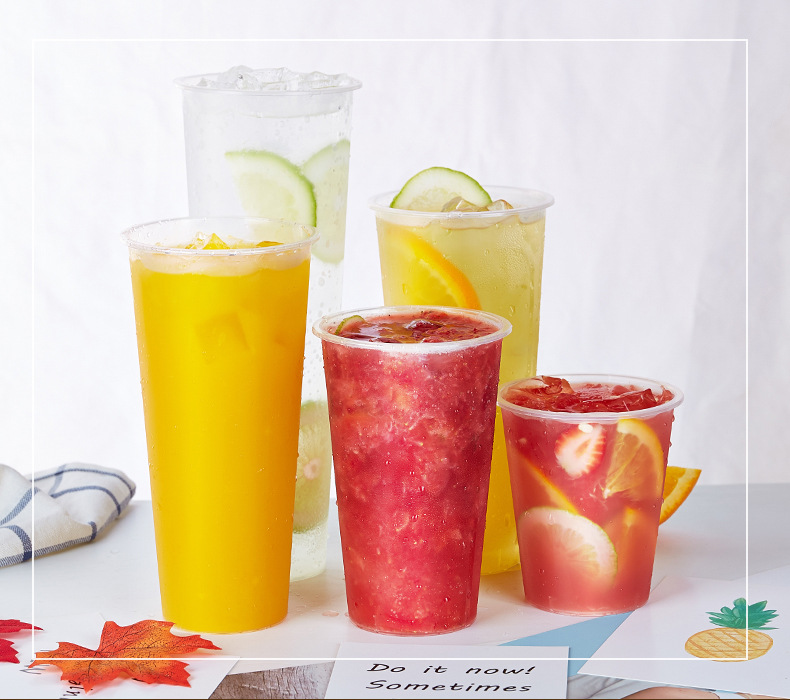
Material
1.PET (polyethylene terephthalate) : high gloss and transparency, often used to make transparent beverage bottles. Usually used for dressing cold drinks more.
2.PP (polypropylene) : Good heat resistance, often used to make microwave food containers. Suitable for both hot and cold, anti-scalding.
3.PLA (polylactic acid) : bio-based, biodegradable plastic, made from renewable resources such as corn, sugar cane, etc. Environmentally friendly, degradable. High cost, suitable for drinks below 50 degrees.
Application
1.Soft PP cups: Often used for one-time use, such as as beverage containers at picnics, parties, or takeaway services.
- Suitable for cold drinks, such as iced drinks, fruit juices, iced coffee and other non-carbonated drinks, because the sealing of soft plastic cups is relatively poor, easy to leak.
- Suitable for drinks with lower temperatures, because the heat resistance of soft plastic cups is relatively poor.
- Suitable for drinks with higher consistency, such as milkshakes, fruit puree, etc., because soft plastic cups are more flexible and easy to squeeze.
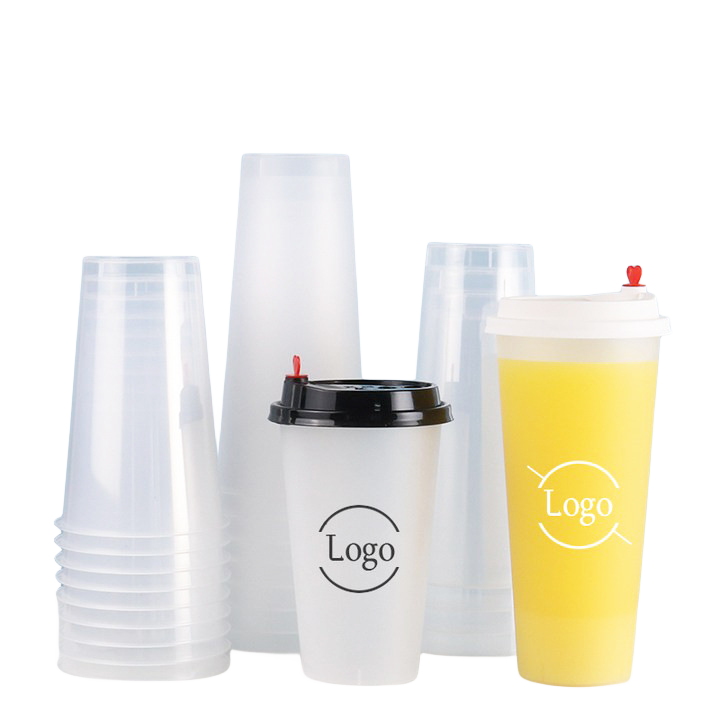
2.Hard PP cups: Hard plastic cups are often used for reuse, such as daily drinking cups in homes, schools or offices.
- Suitable for hot drinks, such as hot tea, hot coffee, etc., because hard plastic cups have better heat resistance.
- Suitable for carbonated beverages, because hard plastic cups are better sealed and not easy to leak.
- Suitable for high temperature drinks, such as hot milk, hot chocolate, etc.
- Suitable for drinks with low consistency, such as water, tea, etc., because of the high hardness of hard plastic cups, it is not easy to deform.
3.PET cup: Suitable for cold drinks, such as coffee, fruit tea, juice, etc. Disposable or reusable food containers, such as salad bowls, snack boxes, etc. With good transparency, suitable for displaying products.
4.PLA cup: Suitable for cold drinks, such as smoothies, juices, milkshakes and other non-carbonated drinks, fresh food packaging, such as fruits, vegetables and so on. Not suitable for high-temperature disinfection or
prolonged heating. Especially suitable for where environmental protection needs to be emphasized.
It should be noted that whether it is a soft plastic cup or a hard plastic cup, it should avoid long-term storage of acidic or alkaline drinks, so as to avoid chemical reactions in the plastic material, affecting the taste and safety of the drink. In addition, the number of repeated use of plastic cups should not be too much, so as to avoid plastic aging and deformation, affecting the use experience.
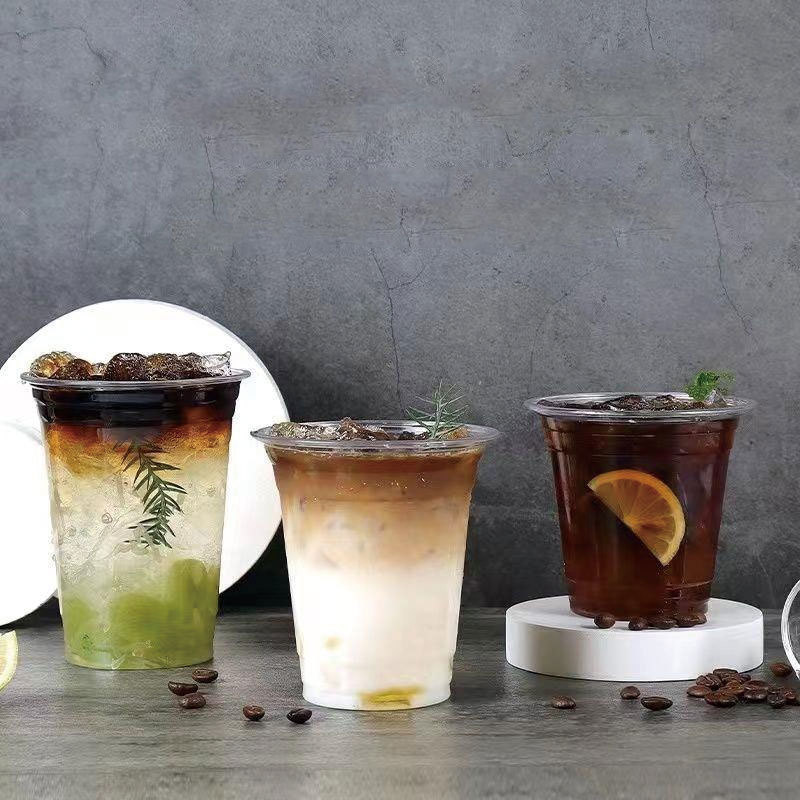
Plastic cup composition:
PP plastic cups are mainly made of Polypropylene (Polypropylene, referred to as PP) material. Polypropylene is a thermoplastic with a variety of excellent physical and chemical properties, making it a commonly used material for the manufacture of plastic cups.
1.Resin:
the main component of plastic cups. It has the advantages of low density, high hardness, good strength, toughness and chemical stability. This kind of water bottle is resistant to high temperature, not easy to deformation, not easy to break, not easy to aging, while non-toxic, tasteless, environmental protection, will not cause harm to human health. The advantages of reusable and easy to clean, very suitable for daily use.
2. Production process of plastic cups
Blow molding: The plastic particles are heated and melted by the blow molding machine and then blown into the mold to form.
Injection molding: The plastic particles are heated and melted and then injected into the mold to cool and form.
3.Personalized service
The printing of plastic cups can provide personalized service according to the needs of the brand to enhance brand identity. The high-precision printing technology makes the graphics on the plastic cup packaging more clear, which helps to improve the product grade.
4. Environmental problems of plastic cups
Recyclability: Some plastic cups can be recycled, but pay attention to classification. PP tableware usually has a recyclable logo, that is, a triangular arrow around the icon, marked with the number "5" inside, indicating that it is No. 5 plastic, that is, polypropylene.
5.Reusable
PP plastic cups can be reused after cleaning, but it should be noted that there may be yellow after long-term use because of oxidation.
6.Safety tips:
Although PP plastic cups have good safety performance, it is still recommended to avoid holding overheating liquid for a long time, so as not to cause deformation or release trace amounts of harmful substances.
Peroration
Choosing the right plastic cup for milk tea is not only related to the beauty of the beverage packaging and user experience, but also involves important issues such as environmental protection and food safety. Choose a reputable manufacturer of cups, can reduce many quality control worries, Wuhan Xin Oasis is located in the central Chinese city of Wuhan, founded in 2012, in the wind and waves of the market through 12 years, Xin oasis to maintain a good faith cause, but also to maintain a user's reputation, free factory covers an area of 30,000 square meters, The annual sales of the company exceed 30 million US dollars, and exports to the United States, Europe, the Middle East, Southeast Asia and other countries. Has a high standard of modern aseptic workshop 15000 square meters, has a supporting injection molding machine, suction machine and other plastic products production line, can customize various sizes of plastic cups to meet your different needs.
